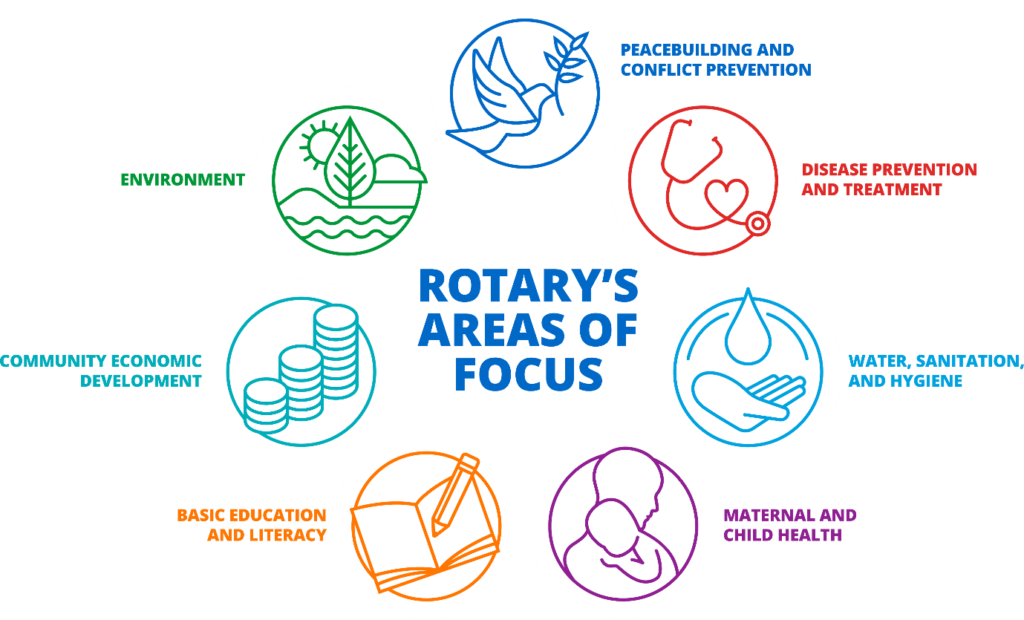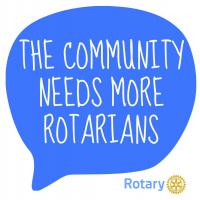Club meeting - Zoom speaker
Thu, Jan 11th 2024 at 7:00 pm - 9:00 pm
Rtn George Spiteri, 1040 Environmental lead

In June 2020, Rotary International announced its newest area of focus: protecting the environment. The decision follows several years, and $18 million in funding, of Rotary Foundation supporting environment-related projects. As recently as January 2022, Rotary in Great Britain & Ireland dedicated a full issue of Rotary Magazine to climate change.
There are many examples of environmental projects happening across the Rotary in Yorkshire and Lincolnshire: from creating sensory gardens, recovering derelict land with gardens, litter picking and tree planting to create more woodland across local areas.
George Spiteri, our District Lead on Environment and member of Scunthorpe Pentagon Rotary, has been tracking environmental projects happening around the district He believes that now is the time for Rotary and clubs to focus on environmental issues as there is so much local and international interest and understanding than ever before. With mass flooding, heat waves, water shortages and other disasters happening at more frequent intervals, there is hardly a community that will be untouched by environmental issues in the near future if they haven’t already.
Focus on improving sustainability efforts with Rotary first
Rotary and its clubs must take responsibility for looking internally at their own impact on the environment. Rotary clubs can look at what environmental areas they would like to prioritise and impact they want to have and make sure that those same things are reflected in how they operate internally. Understanding from an environmental perspective what is going well and what can be improved is also a crucial step in building credibility in communities where Rotary works.
Committing to protecting the environment means that things will need to change. Everything from the foods eaten at meetings and events, the buildings where meetings are held and projects and events that are run all have their own environmental impact. It’s up to clubs to assess and challenge traditional ways of operating and make important decisions based on the environmental impact.
This does not mean that a club has to be perfect from an environmental point of view before looking outward. However, by agreeing on a vision and a set of behaviours, clubs can be more selective in their decisions.
For example, it’s been proven that some choices, such as the foods we eat, have very clear environmental impact. By having a greater variety of vegetarian food options, clubs and groups can have an immediate impact. Studies are beginning to show that people eat more meat-free foods when more vegetarian options are introduced and in doing so, reduces the environmental footprint of a meal.
However, it isn’t always clear what the environmental impact is for many other things. By having a clear, consistent, and embedded vision and set of behaviours, clubs can take small actions every day.
Collaborate with like-minded organisations, groups and individuals
There are many examples of good environmentally conscious projects and initiatives that happen in isolation. A lot of these projects can help us feel good as people and as communities, but the impact can be very minimal.
By continuing to link up with businesses, individuals, community groups and charities who are also working in the environmental sphere, resources can be used more wisely and contribute to making a bigger impact.
According to George, clubs are also in a unique position to use Rotary’s reputation as an international charitable organisation that does good in communities to support well-researched projects. He says that Rotary has been approached by organisations such as Earthshot to work together, and Rotary should put serious thought into joining forces with these types of organisations.
Clubs can still run their own local projects, but by working together with local, national and international organisations, more resources can be allocated to strategic project and so creating a greater and more meaningful impact.
Link Rotary causes to support community needs
Efforts to protect the environment can be embedded in other existing work, projects, and initiatives that Rotary does.
Protecting the environment now sits alongside Rotary’s six other causes:

“I suppose the environment really ought to be the umbrella that glues all that together,” says George.
He explains that the environment underpins much of Rotary’s work locally and internationally. For example, there are clear links between the environment and support for Shelter Boxes and Aqua Boxes for countries increasingly affected by natural disasters and extreme weather.
From flooding to dealing with water shortages and droughts, communities across the UK are also being affected by environmental changes. These changes are impacting farming, people’s health, jobs security, the cost-of-living crisis and more. Clubs can look across the causes to create tailored solutions to fit a community’s needs.
Use available resources to guide you
The journey to become a more environmentally conscious club and organisation can be greatly rewarding, but also challenging. Making use of already existing information and support is going to be a key factor in what makes clubs successful and impactful.
Groups such as Environmental Sustainability Rotary Action Group(ESRAG) exist to provide a point of information and resources for clubs and communities on sustainable practices and issues relating to climate change. They identify environmental leaders within the Rotary and assist them in initiating environmental service projects.
Beyond that, there is other publicly available advice, from the government, councils and charities themselves offering advice on what actions organisations and groups can take. By reaching out to other organisations and seeking out information, clubs can continue to build knowledge and solidify their commitment to environmental causes.
It's time for everyone to act
With the addition of its seventh cause, Rotary is taking a stand to show the world its commitment to the environment. It's our duty as Rotary districts, clubs and individuals to do what we can, according to our abilities and resources, to address environmental concerns.
Rotary is only at the start of this journey, with so much to learn and so much more to do. As District 1040’s Lead on Environment, George understands how challenging tradition is difficult, but by doing so it can help improve Rotary’s reputation locally and internationally.
“A lot of people are concerned about the environment…It's a big topic, now,” he says. “It opens the doors for Rotary to gain additional membership of likeminded people. It opens the doors to engage with the youth. It opens the doors to start Rotaract, Interact and RotaKids clubs.”
Improving Rotary’s relationship with the environment is not only a good thing for the planet, but it draws younger generations of people to get involved. Giving different groups of people an opportunity to be actively involved in environmental causes today will build momentum, knowledge and support needed in the future
'What We Do' Main Pages:

Stainborough Rotary Club is very active in the community, supporting worthy causes such as Centrepoint, Silkstone Scout Camp and Young People’s leadership programme. The Club also helps Santa with his Sleigh every Christmas.
more
We have close links, over many years, with Ho in Ghana. We have helped to fund the building of a Women's Co-operative, a Rotary Community Hall, a Street Children's centre, a water borehole and now the building of a sand dam.
more
Stainborough raises funds for charities through organising events, Sponsorship, car boot & table top sales, competitions and selling merchandise.
more
Stainborough is a friendly club with lots of well supported events throughout the year. Some are 'just for fun', whilst others raise money for good causes at the same time.
morePLP is our first Corporate member, This page will showcase our partnership working with PLP
more




